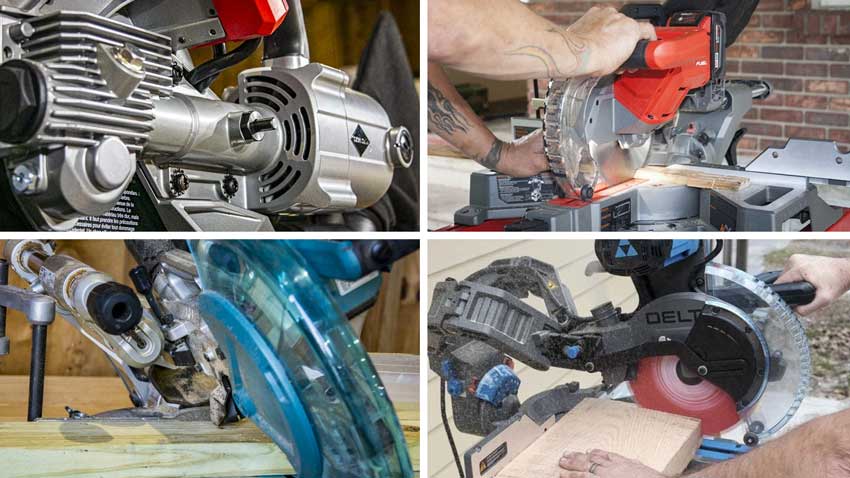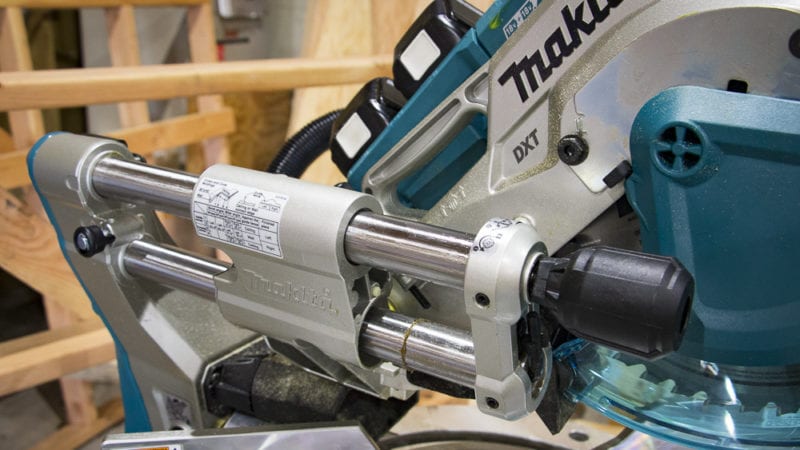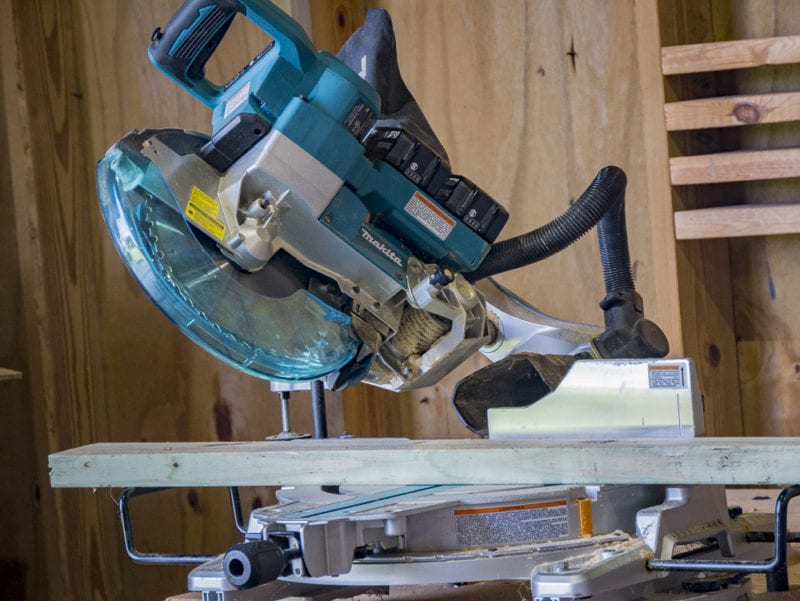We asked our Pros for recommendations on when sliding, compound, single-, and dual-bevel features really make a difference when looking at which types of miter saws to buy. If you’re ready to buy a miter saw—which one do you choose? With several different types of miter saws available, it’s more than just picking the right brand and features. We help you decide.
Table of Contents
Editor’s Note: Check out our best miter saw article for our top recommendations and also take a look at our miter saw buying guide before you make a purchase.
The Various Types of Miter Saws
In its most basic form, the miter saw (or chop saw) has a table that pivots to the right and left, allowing you to change the angle of the cross-cut you’re making. The blade drops straight down and your cut capacity is limited by the blade’s diameter. The capacity will be smaller than the blade diameter since the arbor gets in the way of letting it drop all the way through. It may, however, exceed the blade radius when you make a cut against the back of the fence.
Editor’s Note: A chop saw is similar to a miter saw, but with no ability to adjust the miter angle from 90 degrees. Most chop saws are designed to cut metal. Some people refer to a miter saw as a “chop saw” but we separate them. Check out our chop saw vs miter saw article for more on that topic.
Sliding Miter Saw
A sliding miter saw is a type of miter saw that adds rails to let the saw blade slide front to back across the wood. It gives you a much greater depth of cut than the same size miter saw without rails. Most sliding miter saws also include the ability to make a compound cut.
- Buy if: You need to cut deeper material like 1×12 or 2×12 lumber.
- Pass if: You want a more compact saw for greater portability.
Compound Miter Saw
Compound cuts include both a bevel and miter. A compound miter saw adds the ability to make bevel cuts in addition to its mitering ability. You’ll want to make sure you have this feature anytime you work with crown molding or other trim that gets installed on a wall. Mitering occurs when you rotate the saw blade around a base. That base holds a scale that tells you the miter angle in degrees.
- Buy if: You plan to cut wood as opposed to metal. Most miter saws are now compound in design.
Compound Sliding Miter Saw
The compound sliding miter saw includes the best of both worlds. This miter saw uses rails to increase the cross-cut capacity and adds a left bevel to enable compound cuts. In this way, you get the flexibility of a compound miter saw with the added depth of cut afforded by the slide.
- Buy if: You need to cut deeper material like 1×12 or 2×12 lumber.
- Pass if: You want a more compact saw for greater portability.
Dual Compound Sliding Miter Saw
On a dual compound sliding miter saw, you get a miter table, sliding rails, and beveling that goes both left and right. The left bevel eliminates the need to flip your material around to make the opposite compound cut. This saves you some time and frustration. If you prefer to make your crown and base molding cuts flat—this saw saves you lots of hassle on longer pieces of material.
- Buy if: You want to bevel-cut crown and base flat in both directions.
- Pass if: You rarely need to bevel in both directions. You want a more economical saw.
What Size Saw Should I Buy?
When looking at the various types of miter saws, focus on the nature of your work and the material you intend to cut. Next, understand the trade-offs between capacity versus portability. If you rarely need to cut to the capacity of a 12-inch sliding compound miter saw, why carry the extra weight?
Often an 8-1/2″ sliding model delivers the goods you need for 85% of jobs or more. After all, a miter saw is a trim tool. Anyone who uses a miter saw primarily on 2x lumber or thicker materials either doesn’t understand the proper use of a circular saw or does very specialized work.
If you need capacity for vertical base and crown cuts, a 10-inch or 12-inch saw makes sense. If, however, you do a majority of your cuts “flat” on the base, then a sliding 8-1/2″ saw makes more sense. It packs more portability—and that can save you a lot of hassle day in and day out.
- Buy a 12″ miter saw if: You need to cut deeper material like 1×12 and you don’t mind a larger saw. This saw also works best if you plan to use a stand. Cutting vertical crown tall also often requires this size saw.
- Buy a 10″ miter saw if: You want a good combination of capacity and portability.
- Pick up a <10″ miter saw if: You want to prioritize portability and plan to cut smaller base, crown, and door trim.
Traditional Slides vs “Glide” or Similar Mechanisms
Another consideration when deciding which type of miter saw to buy concerns where you intend to place it. A traditional sliding miter saw requires room behind the saw in order for that sliding mechanism to function. For anyone concerned with placement against a wall, some saws present an innovative solution.
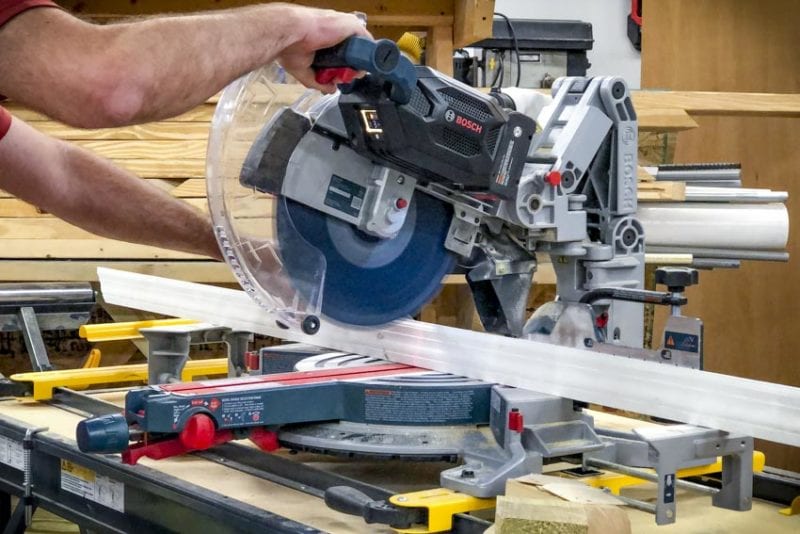
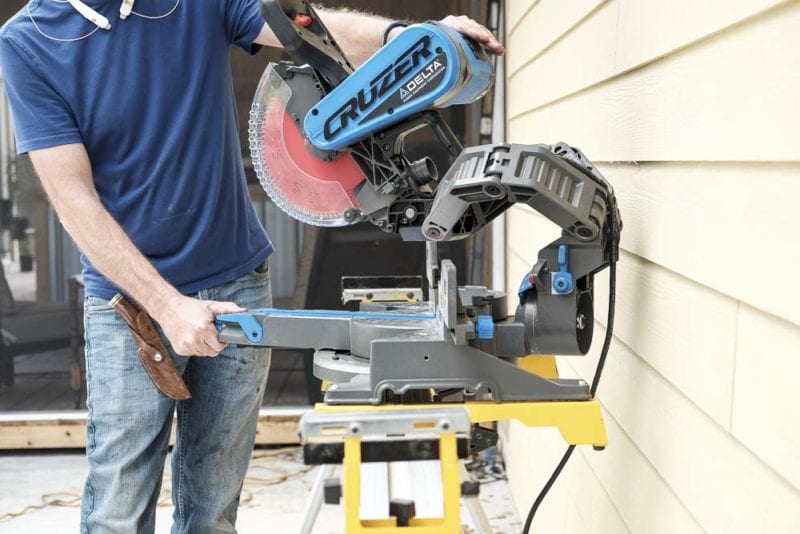
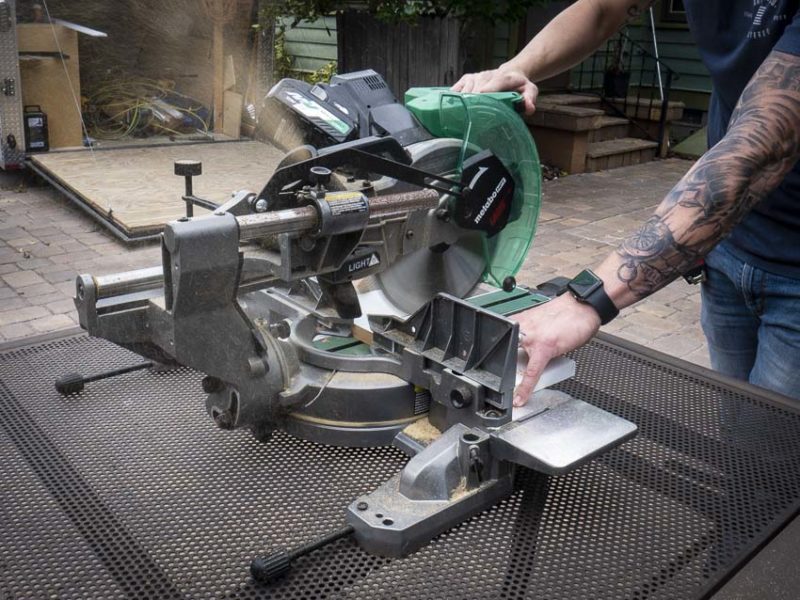
The Bosch Axial Glide miter saw uses a mechanism that lets the saw extend forward without requiring rails off the backside of the tool. The Delta Cruzer miter saw works in a similar manner. Even the Metabo HPT C3610DRA miter saw uses a dual-rail system to provide a similarly forward-mounted slide mechanism.
Should I Buy a Corded or Cordless Miter Saw?
The question of whether you should buy a corded or cordless miter saw didn’t even exist 10 years ago. Now, some of the best miter saws we’ve used have versions that run off battery power.
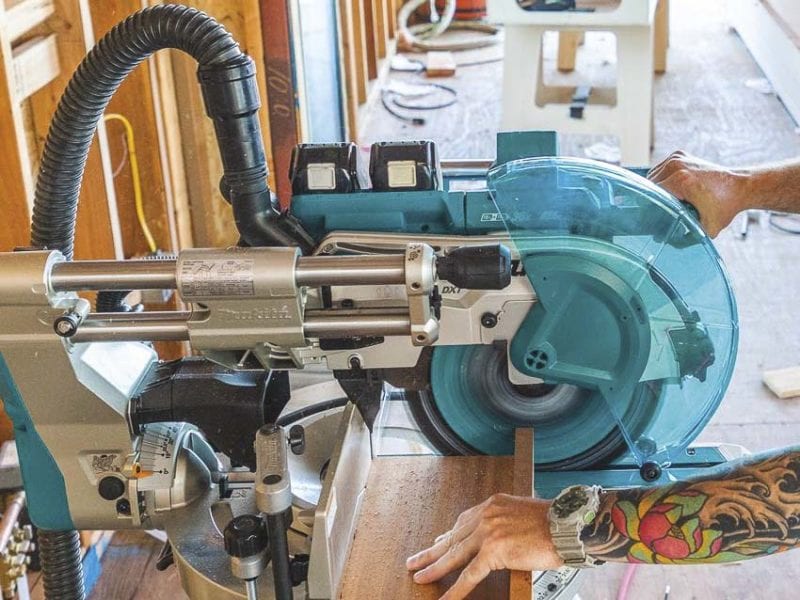
Portability certainly has to do with size, but some Pros also have to deal with dragging extension cords. If you can save time and energy using a cordless miter saw, then, by all means, investigate the many battery-powered options on the market. Most offer corded-level power, and some even offer the ability to work off either battery power or through a corded adapter.
What Do Our Pros Recommend?
Without a doubt, a dual compound sliding miter saw delivers the most versatility. Depending on what you cut, you’re likely to get the most benefit and capacity from a 10-inch or 12-inch model. Once you choose, the next step is to practice how to use a miter saw like a Pro.
Did you like the saw shown in this article? Check out our Makita XSL07 miter saw review or buy it at Acme Tools.
Have More Questions? Check Out These Articles
What to Look for When Buying a Miter Saw

